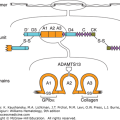Three mechanisms of drug-related immunologic injury to red cells are defined:
— Hapten/drug adsorption involving drug-dependent antibodies
— Ternary complex formation involving drug-dependent antibodies
— Induction of autoantibodies that react with red cells in the absence of the inciting drug
Drug-related nonimmunologic protein adsorption may also result in a positive direct antiglobulin test without red cell injury.
Table 24–1 lists the drugs implicated in the production of a positive direct antiglobulin test and accelerated red cell destruction.
Table 24–2 summarizes the four mechanisms of drug-induced immune interaction with the red cell surface.
TABLE 24–1ASSOCIATION BETWEEN DRUGS AND POSITIVE DIRECT ANTIGLOBULIN TESTS*




| Drugs | |
| Hapten or Drug Adsorption Mechanism | |
| Penicillins | Carbromal |
| Cephalosporins | Tolbutamide |
| Tetracycline | Cianidanol |
| 6-Mercaptopurine | Hydrocortisone |
| Oxaliplatin | |
| Ternary Complex Mechanism | |
| Stibophen | Probenecid |
| Quinine | Nomifensine |
| Quinidine | Cephalosporins |
| Chlorpropamide | Diethylstilbestrol |
| Rifampicin | Amphotericin B |
| Antazoline | Doxepin |
| Thiopental | Diclofenac |
| Tolmetin | Etodolac |
| Metformin | Hydrocortisone |
| Oxaliplatin | |
| Pemetrexed | |
| Autoantibody Mechanism | |
| Cephalosporins | Cianidanol |
| Tolmetin | Latamoxef |
| Nomifensine | Glafenine |
| α-Methyldopa | Procainamide |
| l-Dopa | Diclofenac |
| Mefenamic acid | Pentostatin |
| Teniposide | Fludarabine |
| Oxaliplatin | Cladribine |
| Efalizumab | Lenalidomide |
| Nonimmunologic Protein Adsorption | |
| Cephalosporins | Cisplatin |
| Oxaliplatin | Carboplatin |
| Uncertain Mechanism of Immune Injury | |
| Mesantoin | Streptomycin |
| Phenacetin | Ibuprofen |
| Insecticides | Triamterene |
| Chlorpromazine | Erythromycin |
| Melphalan | 5-Fluorouracil |
| Isoniazid | Nalidixic acid |
| p-Aminosalicylic acid | Sulindac |
| Acetaminophen | Omeprazole |
| Thiazides | Temafloxacin |
| Efavirenz | Carboplatin |
Stay updated, free articles. Join our Telegram channel

Full access? Get Clinical Tree




